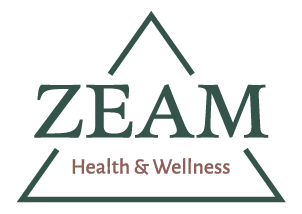Some people describe trauma as a lightning strike. Others describe it more like a slow flood. Either way, when the body decides a threat is too big, it holds onto the memory, sometimes for years.
The result is often a pattern of symptoms that can look like anxiety, anger, emotional detachment, or panic. That is how post-traumatic stress disorder (PTSD) tends to show up. However, what does recovery look like?
For many, treatment feels like a frustrating cycle of trial and error: a rushed diagnosis, a prescription, a list of coping tools, and a follow-up in six weeks. For some people, that process helps. For others, it leaves a lot out, not because the providers do not care but because the model itself is narrow.
Trauma Does Not Follow a Script
PTSD is not one-size-fits-all, nor is the path to recovery. The condition might begin after a single terrifying event or build slowly through years of exposure to stress.
People with complex PTSD often carry emotional wounds shaped by long-term abuse, abandonment, or repeated loss. Their symptoms include:
- Identity shifts
- Chronic shame
- Deep sense of disconnection from others
PTSD treatment that only targets surface-level symptoms often misses what is actually driving the distress. A person might look “functional” on the outside but feel hollow, angry, or lost inside. That gap creates a lot of confusion in traditional care models.
A Closer Look at Trauma-Informed Care
When someone hears the phrase “trauma-informed,” they might assume it means therapy that addresses trauma. That is part of it, but the actual definition goes deeper.
Trauma-informed care is a complete shift in how therapy is approached. It starts with one basic idea: People who have experienced trauma need to feel emotionally, physically, and relationally safe.
To create that safety, providers focus on six principles:
- Safety
- Trust
- Collaboration
- Peer support
- Empowerment
- Cultural responsiveness
These principles shape the way therapists listen, ask questions, offer options, and respond to discomfort. The entire process becomes less about controlling symptoms and more about rebuilding trust with the body, relationships, and environment.
A trauma-informed space might mean giving a client more say in how sessions unfold. It might mean making sure the lighting and seating feel comfortable. It might mean going slower when discussing memories.
Integration Matters More Than It Gets Credit For
In standard therapy, treatment often happens in silos:
- A psychiatrist manages medication
- A therapist talks through triggers
- A yoga instructor offers breathing exercises on the side
However, if none of these approaches are connected, it becomes harder to tell what is working. More importantly, it becomes harder for the patient to feel like there is one clear path forward.
Integrated care means weaving all of these elements together. It means aligning goals across providers and making sure every piece of support works in sync. For trauma recovery, integration is essential.
PTSD impacts the nervous system, mood regulation, relationships, and physical health. Treating one area in isolation may offer relief, but it rarely brings deep or lasting change.
This is where some of the most promising approaches live:
- EMDR helps the brain reprocess painful memories
- Somatic therapies bring attention to physical tension and emotional release
- Mindfulness strengthens the ability to notice thoughts without collapsing into them
These methods, when used together and grounded in a trauma-informed foundation, can shift the entire healing trajectory.
Medication Is a Tool, Not a Cure
Medication often plays a role in trauma recovery. It can regulate sleep, reduce hypervigilance, or support emotional balance during tough phases of therapy. However, there is a difference between using medication and relying on it as the core treatment.
Some care models begin with a prescription and leave it at that. Others overemphasize pharmacological solutions without addressing the root of trauma. That creates a frustrating loop. The symptoms may lessen for a while, but the person still feels stuck, anxious, or emotionally distant.
A better model treats medication as one option among many. When used thoughtfully, it can give someone the stability they need to engage in deeper therapeutic work. But the work itself still requires reflection, connection, and sometimes difficult emotional processing. That part cannot be outsourced to a pill.
The Body Needs a Voice in Recovery
Trauma lives in muscle tension, heart rate, and breathing patterns. This is why talk therapy, while valuable, sometimes reaches a limit. People might know why they feel the way they do but still feel powerless to change it.
Somatic therapy changes the starting point. It invites clients to notice how emotions show up in their bodies. These could be a tight chest, a clenched jaw, or a collapsed posture. These sensations become entry points to process old fear, grief, or rage in real time.
Practices like pendulation and titration help people dip into hard emotions without getting overwhelmed. Over time, this builds resilience and teaches the nervous system that it is possible to feel without shutting down or exploding. The process may look subtle from the outside, but its impact can be profound.
Recovery Depends on the Right Provider
Accessing psychiatric treatment can be challenging. Even more so when the search feels rushed or impersonal. Many people looking for PTSD treatment near them are searching for someone who will take the time to understand their history, their pain, and their pace.
Healing from trauma often involves trust repair, and that starts with the provider:
- Does the therapist rush to interpret?
- Do they offer space for questions?
- Are they trained in trauma-specific methods or using a generic mental health approach?
The truth is that credentials matter, but so does presence. Some clinicians may have impressive degrees but little experience with the complexity of PTSD. Others may offer genuine empathy but lack the tools to address deep somatic symptoms.
Zeam: Where Trauma Meets Care
Finding care that respects the full complexity of trauma is not easy. Some clinics offer short-term fixes, while others push a single treatment model for every case. But recovery is not a product to hand out. It is a process that unfolds differently for each person.
Zeam Health & Wellness offers a trauma-informed, integrated approach to healing. Our mental health team understands that medication is a tool, not a plan. That somatic therapies deserve a seat at the table. That clients should feel safe, seen, and empowered, not treated like a checklist.
If you are looking for PTSD treatment near you in Sacramento, Folsom, and Roseville, we are ready to meet you where you are.




